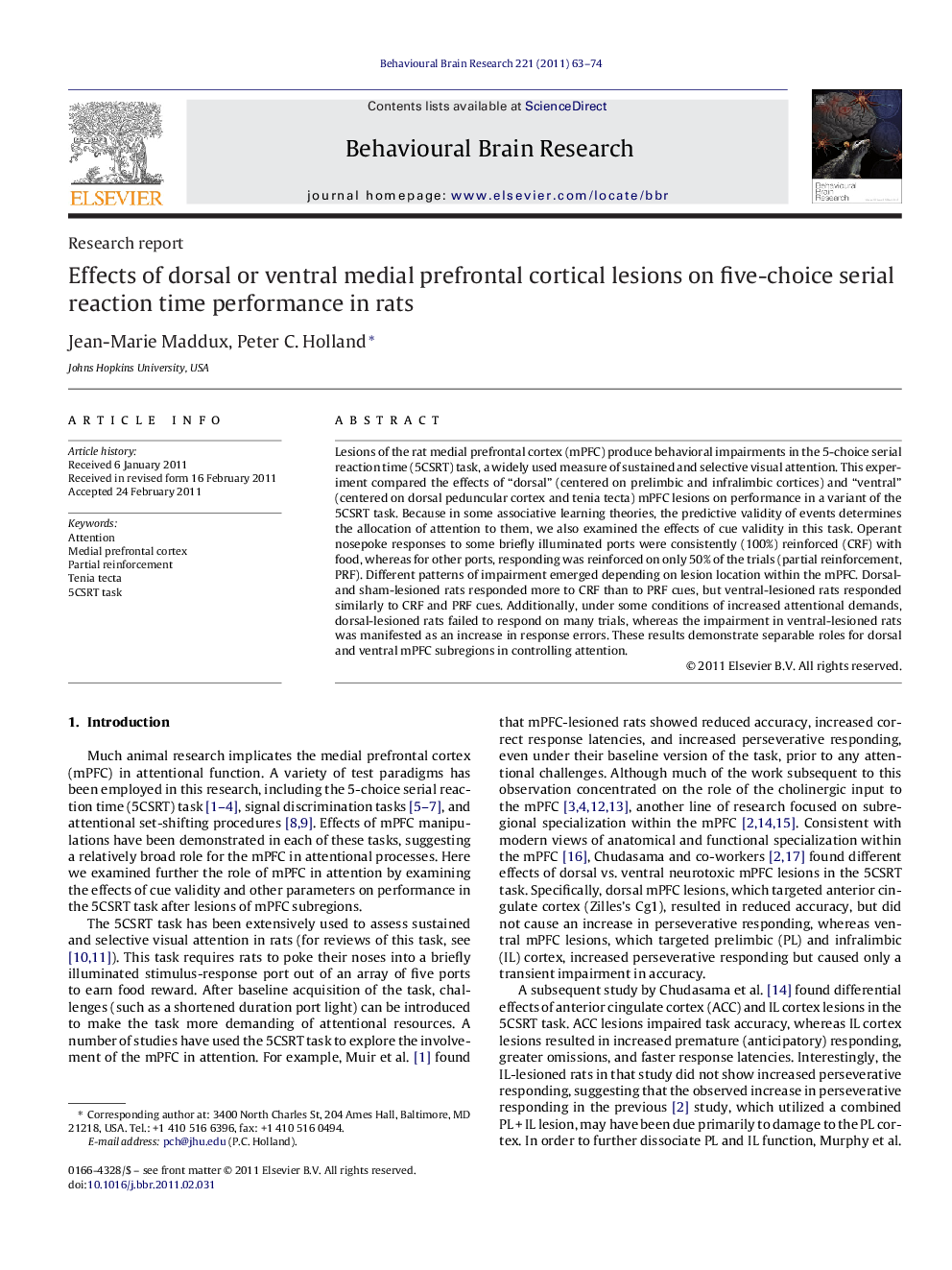| Article ID | Journal | Published Year | Pages | File Type |
|---|---|---|---|---|
| 4313677 | Behavioural Brain Research | 2011 | 12 Pages |
Lesions of the rat medial prefrontal cortex (mPFC) produce behavioral impairments in the 5-choice serial reaction time (5CSRT) task, a widely used measure of sustained and selective visual attention. This experiment compared the effects of “dorsal” (centered on prelimbic and infralimbic cortices) and “ventral” (centered on dorsal peduncular cortex and tenia tecta) mPFC lesions on performance in a variant of the 5CSRT task. Because in some associative learning theories, the predictive validity of events determines the allocation of attention to them, we also examined the effects of cue validity in this task. Operant nosepoke responses to some briefly illuminated ports were consistently (100%) reinforced (CRF) with food, whereas for other ports, responding was reinforced on only 50% of the trials (partial reinforcement, PRF). Different patterns of impairment emerged depending on lesion location within the mPFC. Dorsal- and sham-lesioned rats responded more to CRF than to PRF cues, but ventral-lesioned rats responded similarly to CRF and PRF cues. Additionally, under some conditions of increased attentional demands, dorsal-lesioned rats failed to respond on many trials, whereas the impairment in ventral-lesioned rats was manifested as an increase in response errors. These results demonstrate separable roles for dorsal and ventral mPFC subregions in controlling attention.
► Normal rats and rats with lesions of dorsal mPFC responded more to CRF than to PRF cues in a 5CSRT task, but rats with ventral mPFC lesions responded similarly to those cues. ► When attentional demands were increased, rats with dorsal lesions omitted responding on many trials whereas rats with ventral lesions showed increased errors. ► Dorsal and ventral mPFC.
